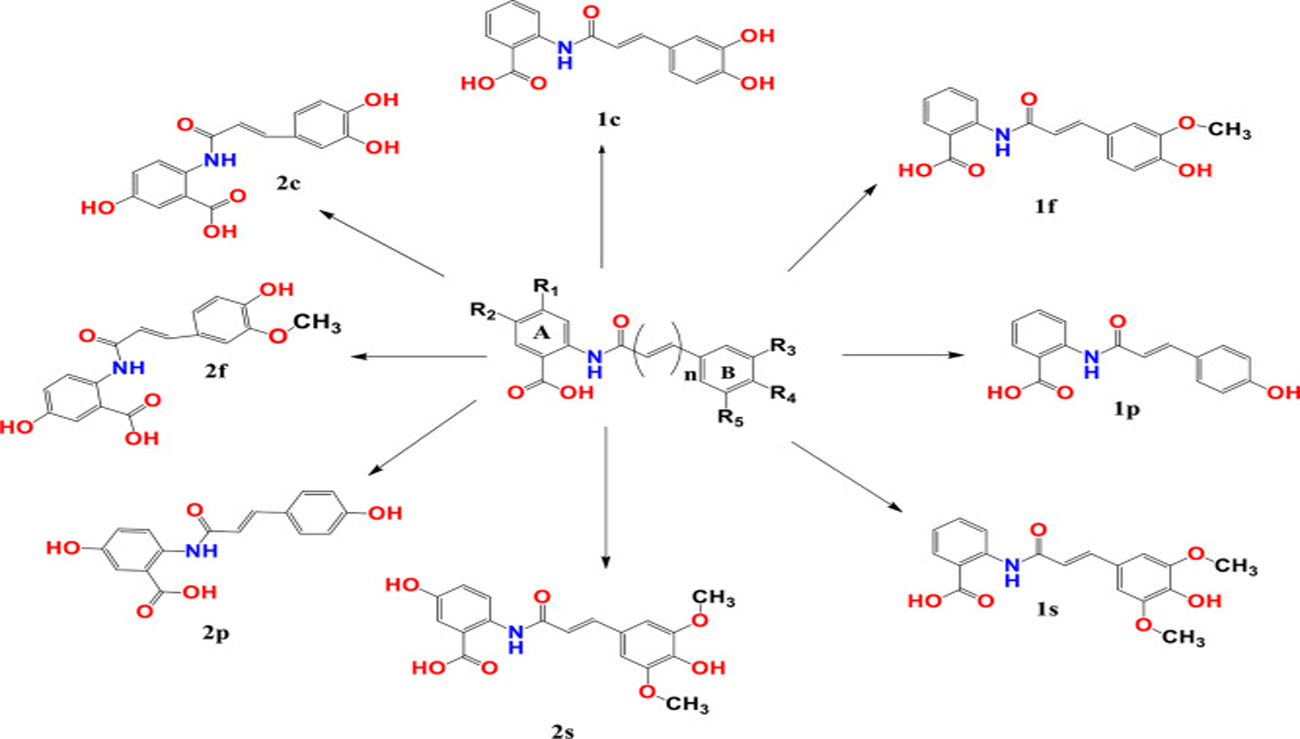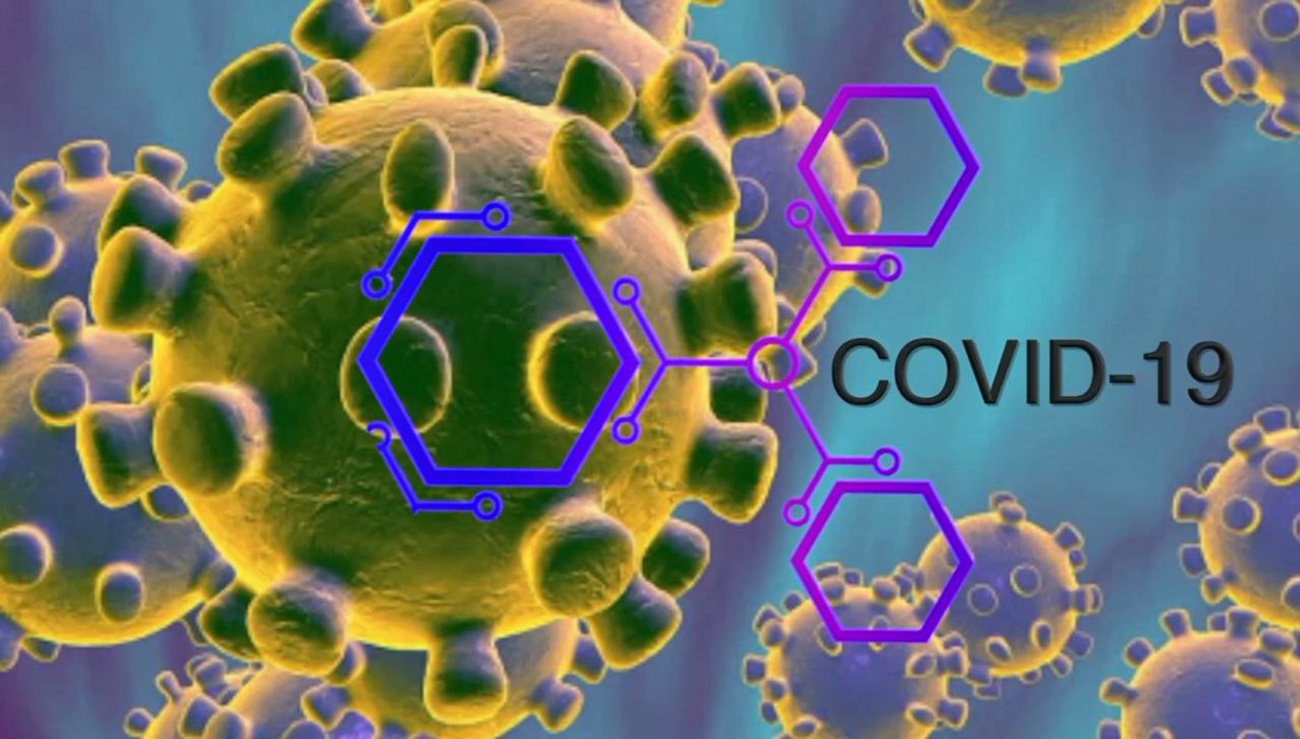
Phytoalexins: Sources and Their Pharmacological Potential
Abstract:
Background: Plants are easily prone towards microbial infections on exposure to microorganisms and pathogens. In order to defense, plants produce low molecular weight secondary metabolites which were later known as “Phytoalexins”. These molecules have vast therapeutic potential also.
Purpose: The purpose of this review is to explore the phytoalexins and their pharmacological effects.
Methods: The data included from the articles were published from Web of Science, PubMed, Medline, Scopus, and Embase by using relevant keywords including plants possessing phytoalexins and their specific biological applications.
Results: The review insights the potential of phytoalexins in various diseases and to explore have phytoalexins applications in human health and disease control.
Conclusions: On the basis of this review we may be conclude that phytoalexins have tremendous potential in the treatment and prevention of various life-threatening diseases like diabetes mellitus, cancer, brain damage, and heart attack.
Author(s):
DOI:
https://doi.org/10.15415/jptrm.2020.81001
Keywords:
Phytoalexins, Resveratrol, Anti-Diabetic, Anti-Cancer, Cardio-Protective, Neuro-Protective
References:
Egbuonu, A.C.C., & Eneogwe, J.C. (2018). Phytoalexins: Current and possible future applications in human health and diseases control. International Journal of Molecular Biology: Open Access, 3(3), 107-112. https://doi.org/10.15406/ijmboa.2018.03.00061
Pedras, M.S.C., Zheng, Q.-A., & Sarma-Mamillapalle, V.K. (2007). The phytoalexins from Brassicaceae: structure, biological activity, synthesis and biosynthesis. Natural Product Communications, 2(3), 319-330. https://doi.org/10.1177/1934578X0700200315
Grayer, R.J., & Kokubun, T. (2001). Plant–fungal interactions: the search for phytoalexins and other antifungal compounds from higher plants. Phytochemistry, 56(3), 253-263. https://doi.org/10.1016/S0031-9422(00)00450-7
Bavaresco, L.U.I.G.I. (2003). Role of viticultural factors on stilbene concentrations of grapes and wine. Drugs Under Experimental and Clinical Research, 29(5-6), 181-187.
Pedras, M.S.C., Adio, A.M., Suchy, M., Okinyo, D.P.O., Zheng, Q.A., Jha, M., & Sarwar, M.G. (2006). Detection, characterization and identification of crucifer phytoalexins using high-performance liquid chromatography with diode array detection and electrospray ionization mass spectrometry. Journal of Chromatography A, 1133(1-2), 172-183. https://doi.org/10.1016/j.chroma.2006.08.015
Hammerschmidt, R. (1999). Phytoalexins: what have we learned after 60 years? Annual Review of Phytopathology, 37(1), 285-306. https://doi.org/10.1146/annurev.phyto.37.1.285
Sen, S. (2017). Role of Phytoalexins in Plant-Microbe Interactions and Human Health. International Journal of Scientific Research and Management, 5(7), 6215-6225. https://doi.org/10.18535/ijsrm/v5i7.52
Jeandet, P., Hébrard, C., Deville, M.-A., Cordelier, S., Dorey, S., Aziz, A., & Crouzet, J. (2014). Deciphering the role of phytoalexins in plant-microorganism interactions and human health. Molecules, 19(11), 18033-18056. https://doi.org/10.3390/molecules191118033
Lozano-Mena, G., Sánchez-González, M., Juan, M.E., & Planas, J.M. (2014). Maslinic acid, a natural phytoalexin-type triterpene from olives—a promising nutraceutical? Molecules, 19(8), 11538-11559. https://doi.org/10.3390/molecules190811538
Smith, B., Randle, D., Mezencev, R., Thomas, L., Hinton, C., & Odero-Marah, V. (2014). Camalexin-induced apoptosis in prostate cancer cells involves alterations of expression and activity of lysosomal protease cathepsin D. Molecules, 19(4), 3988-4005. https://doi.org/10.3390/molecules19043988
Kello, M., Drutovic, D., Chripkova, M., Pilatova, M., Budovska, M., Kulikova, L., Urdzik, P., & Mojzis, J. (2014). ROS-dependent antiproliferative effect of brassinin derivative homobrassinin in human colorectal cancer Caco2 cells. Molecules, 19(8), 10877-10897. https://doi.org/10.3390/molecules190810877
Coxon, D.T., O’Neill, T.M., Mansfield, J.W., & Porter, A.E.A. (1980). Identification of three hydroxyflavan phytoalexins from daffodil bulbs. Phytochemistry, 19(5), 889-891. https://doi.org/10.1016/0031-9422(80)85132-6
Browne, L.M., Conn, K.L., Ayert, W.A., & Tewari, J.P. (1991). The camalexins: new phytoalexins produced in the leaves of Camelina sativa (Cruciferae). Tetrahedron, 47(24), 3909-3914. https://doi.org/10.1016/S0040-4020(01)86431-0
Geigert, J., Stermitz, F.R., Johnson, G., Maag, D.D., & Johnson, D.K. (1973). Two phytoalexins from sugarbeet (Beta vulgaris) leaves. Tetrahedron, 29(18), 2703-2706. https://doi.org/10.1016/S0040-4020(01)93389-7
Sitton, D., & West, C.A. (1975). Casbene: An anti-fungal diterpene produced in cell-free extracts of Ricinus communis seedlings. Phytochemistry, 14(9), 1921-1925. https://doi.org/10.1016/0031-9422(75)83098-6
Jeandet, P., Clément, C., Courot, E., & Cordelier, S. (2013). Modulation of phytoalexin biosynthesis in engineered plants for disease resistance. International Journal of Molecular Sciences, 14(7), 14136-14170. https://doi.org/10.3390/ijms140714136
Sunilkumar, G., Campbell, L.M., Puckhaber, L., Stipanovic, R.D., & Rathore, K.S. (2006). Engineering cottonseed for use in human nutrition by tissue-specific reduction of toxic gossypol. Proceedings of the National Academy of Sciences, 103(48), 18054-18059. https://doi.org/10.1073/pnas.0605389103
Ward, E.W.B., Unwin, C.H., & Stoessel, A. (1975). Loroglossol: An orchid phytoalexin. Phytopathology, 65, 632–633.
Langcake, P., & Pryce, R.J. (1976). The production of resveratrol by Vitis vinifera and other members of the Vitaceae as a response to infection or injury. Physiological Plant Pathology, 9(1), 77-86. https://doi.org/10.1016/0048-4059(76)90077-1
Boue, S.M., Cleveland, T.E., Carter-Wientjes, C., Shih, B.Y., Bhatnagar, D., McLachlan, J.M., & Burow, M.E. (2009). Phytoalexin-enriched functional foods. Journal of Agricultural and Food Chemistry, 57(7), 2614-2622. https://doi.org/10.1021/jf8040403
Huang, D.-D., Shi, G., Jiang, Y., Yao, C., & Zhu, C. (2020). A review on the potential of Resveratrol in prevention and therapy of diabetes and diabetic complications. Biomedicine & Pharmacotherapy, 125, 109767. https://doi.org/10.1016/j.biopha.2019.109767
Öztürk, E., Arslan, A.K.K., Yerer, M.B., & Bishayee, A. (2017). Resveratrol and diabetes: A critical review of clinical studies. Biomedicine & Pharmacotherapy, 95, 230-234. https://doi.org/10.1016/j.biopha.2017.08.070
Kumar, A., Kaundal, R.K., Iyer, S., & Sharma, S.S. (2007). Effects of resveratrol on nerve functions, oxidative stress and DNA fragmentation in experimental diabetic neuropathy. Life Sciences, 80(13), 1236-1244. https://doi.org/10.1016/j.lfs.2006.12.036
Sharma, S., Kulkarni, S.K., & Chopra, K. (2007). Effect of resveratrol, a polyphenolic phytoalexin, on thermal hyperalgesia in a mouse model of diabetic neuropathic pain. Fundamental & Clinical Pharmacology, 21(1), 89-94. https://doi.org/10.1111/j.1472-8206.2006.00455.x
Wen, D., Huang, X., Zhang, M., Zhang, L., Chen, J., Gu, Y., & Hao, C.-M. (2013). Resveratrol attenuates diabetic nephropathy via modulating angiogenesis. PloS one, 8(12), e82336. https://doi.org/10.1371/journal.pone.0082336
Kim, Y.H., Kim, Y.S., Roh, G.S., Choi, W.S., & Cho, G.J. (2012). Resveratrol blocks diabetes-induced early vascular lesions and vascular endothelial growth factor induction in mouse retinas. Acta Ophthalmologica, 90(1), e31-e37. https://doi.org/10.1111/j.1755-3768.2011.02243.x
Soufi, F.G., Mohammad-nejad, D., & Ahmadieh, H. (2012). Resveratrol improves diabetic retinopathy possibly through oxidative stress—Nuclear factor κb—Apoptosis pathway. Pharmacological Reports, 64(6), 1505-1514. https://doi.org/10.1016/S1734-1140(12)70948-9
Jing, Y., Zhaoyang, R., & Jing, C. (2005). A Promising Secondary Metabolite-Resveratrol [J]. Chinese Agricultural Science Bulletin, 7.
Aktaş, H.S., Ozel, Y., Ahmad, S., Pençe, H.H., Ayaz-Adakul, B., Kudas, I., Tetik, S., Sekerler, T., Canbey-Goret, C., Kabasakal, L., & Elcioglu, H.K. (2019). Protective effects of resveratrol on hepatic ischemia reperfusion injury in streptozotocin-induced diabetic rats. Molecular and Cellular Biochemistry, 460(1-2), 217-224. https://doi.org/10.1007/s11010-019-03582-z
Hamadi, N., Mansour, A., Hassan, M.H., Khalifi-Touhami, F., & Badary, O. (2012). Ameliorative effects of resveratrol on liver injury in streptozotocin-induced diabetic rats. Journal of Biochemical and Molecular Toxicology, 26(10), 384-392. https://doi.org/10.1002/jbt.21432
Rauf, A., Imran, M., Butt, M.S., Nadeem, M., Peters, D.G., & Mubarak, M.S. (2018). Resveratrol as an anti-cancer agent: A review. Critical Reviews in Food Science and Nutrition, 58(9), 1428-1447. https://doi.org/10.1080/10408398.2016.1263597
Mehta, R.G., Liu, J., Constantinou, A., Thomas, C. F., Hawthorne, M., You, M., Gerhauser, C., Pezzuto, J.M., Moon, R.C., & Moriarty, R.M. (1995). Cancer chemopreventive activity of brassinin, a phytoalexin from cabbage. Carcinogenesis, 16(2), 399-404. https://doi.org/10.1093/carcin/16.2.399
Abdel-Latif, G.A., Al-Abd, A.M., Tadros, M.G., Al-Abbasi, F.A., Khalifa, A.E., & Abdel-Naim, A.B. (2015). The chemomodulatory effects of resveratrol and didox on herceptin cytotoxicity in breast cancer cell lines. Scientific reports, 5, 12054. https://doi.org/10.1038/srep12054
Mohapatra, P., Satapathy, S.R., Das, D., Siddharth, S., Choudhuri, T., & Kundu, C. N. (2014). Resveratrol mediated cell death in cigarette smoke transformed breast epithelial cells is through induction of p21Waf1/Cip1 and inhibition of long patch base excision repair pathway. Toxicology and Applied Pharmacology, 275(3), 221-231. https://doi.org/10.1016/j.taap.2014.01.011
Zheng, G.H., & Li, H.Q. (2008). Effects of garlic oil combined with resveratrol on inducting of apoptosis and expression of Fas, bcl-2 and bax in human gastric cancer cell line. Zhonghua yu Fang yi xue za zhi [Chinese Journal of Preventive Medicine], 42(1), 39-42.
Riles, W.L., Erickson, J., Nayyar, S., Atten, M.J., Attar, B.M., & Holian, O. (2006). Resveratrol engages selective apoptotic signals in gastric adenocarcinoma cells. World Journal of Gastroenterology, 12(35), 5628-5634. https://doi.org/10.3748/wjg.v12.i35.5628
Kiskova, T., Kubatka, P., Büsselberg, D., & Kassayova, M. (2020). The Plant-Derived Compound Resveratrol in Brain Cancer: A Review. Biomolecules, 10(1), 161. https://doi.org/10.3390/biom10010161
Ma, L., Li, W., Wang, R., Nan, Y., Wang, Q., Liu, W., & Jin, F. (2015). Resveratrol enhanced anticancer effects of cisplatin on non-small cell lung cancer cell lines by inducing mitochondrial dysfunction and cell apoptosis. International Journal of Oncology, 47(4), 1460-1468. https://doi.org/10.3892/ijo.2015.3124
Ko, J.-C., Syu, J.-J., Chen, J.-C., Wang, T.-J., Chang, P.-Y., Chen, C.-Y., Jian, Y.-T., Jian, Y.-J., & Lin, Y.W. (2015). Resveratrol Enhances Etoposide-Induced Cytotoxicity through Down-Regulating ERK 1/2 and AKT-Mediated X-ray Repair Cross-Complement Group 1 (XRCC 1) Protein Expression in Human Non-Small-Cell Lung Cancer Cells. Basic & Clinical Pharmacology & Toxicology, 117(6), 383-391. https://doi.org/10.1111/bcpt.12425
Pallàs, M., Casadesús, G., Smith, M.A., Coto-Montes, A., Pelegri, C., Vilaplana, J., & Camins, A. (2009). Resveratrol and neurodegenerative diseases: Activation of SIRT1 as the potential pathway towards neuroprotection. Current Neurovascular Research, 6(1), 70-81. https://doi.org/10.2174/156720209787466019
Rocha-González, H.I., Ambriz-Tututi, M., & Granados-Soto, V. (2008). Resveratrol: A natural compound with pharmacological potential in neurodegenerative diseases. CNS Neuroscience & Therapeutics, 14(3), 234-247. https://doi.org/10.1111/j.1755-5949.2008.00045.x




